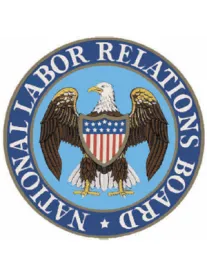On January 25, 2019, the National Labor Relations Board returned in yet another area to a standard that existed before the “Obama Board.” In SuperShuttle DFW, Inc., the Board vacated the test it had adopted five years ago to determine whether a worker is an independent contractor or an employee for the purposes of the National Labor Relations Act and, thus, whether the worker receives the rights and protections the Act provides employees. By returning to its prior test, the Board has provided additional certainty to employers, particularly where workers’ assignments afford them significant room to recognize profits or losses.
As background, the Board historically has applied the traditional “common-law agency test” when determining whether a worker is an employee or independent contractor under the Act. This test considers several factors, including: (i) how much control the putative employer exercises over the worker; (ii) whether the worker’s services fall outside the employer’s core competencies; (iii) whether the putative employer provides the tools, equipment and place of work; (iv) how long the worker has served with the putative employer; (v) how the worker is paid; and (vi) whether the worker has significant “entrepreneurial opportunity,” i.e., whether the situation afforded the worker significant room to generate profits or, alternatively, to recognize losses.
In 2014, however, the Board and its Democrat majority revised this test. In FedEx Home Delivery, 361 NLRB 610 (2014), the Board asserted that it was “clarifying” the significance of the entrepreneurial opportunity factor. Ultimately, the Board held that it would consider only whether the workers actually recognized entrepreneurial opportunities (i.e., whether they actually saw significant differences in profits or losses), rather than whether that was merely possible. The Board also held that, when it was assessing this entrepreneurial opportunity factor, it also should assess whether the worker: (i) had the realistic ability to work for other companies; (ii) had an ownership or proprietary interest in her work; and (iii) controlled significant business decisions, such as scheduling, hiring, purchasing equipment, and how to spend capital. This FedEx test created significant uncertainty for employers and made it difficult to treat a worker as an independent contractor when that worker spent most of her time working for one specific entity.
Now, in SuperShuttle DFW, the Board vacated this FedEx standard. According to the Board’s Republican majority, the prior FedEx decision had impermissibly altered the common-law test, rather than merely “clarifying” the test as the FedEx majority asserted. Accordingly, the Board decided to return to the traditional common-law test and, as a result, to afford significant weight to the entrepreneurial opportunity factor. At the same time, this traditional standard will decrease the emphasis on whether the worker has the “right to control” key aspects of the services (although the Board will still consider this as part of a larger analysis). (In this respect, SuperShuttle DFW describes the independent contractor test similarly to how the Board is seeking to modify the joint employer test, i.e., by decreasing the emphasis on whether the putative employer potentially could control the putative worker in cases where the putative employer does not actually exercise that control.)
The Board then illustrated how it will apply this test. The case at hand involved individuals who had acquired “franchises” to operate airport shuttle vans, after contracting with a franchisor entity that had acquired the necessary licenses and created the overarching business model. Ultimately, the Board found that the franchisees were independent contractors, rather than employees, after noting the following:
-
The franchisees had almost total control over their schedules;
-
The franchisees could choose how much, or how little, they worked;
-
The franchisees kept all of the fares they collected, and were responsible for most of their own expenses;
-
The franchisor did not communicate directly with the franchisees on a day-to-day basis;
-
The franchisees were paid by customers, rather than the franchisor; and
-
The franchisees owned their vans, paid directly for their fuel and maintenance, and were directly responsible for most of their other costs.
Although the Board will assess independent contractor questions on a case-by-case basis, SuperShuttle DFW provides a good illustration of the facts that the Board considers most important. Now that the Board has increased its emphasis on the entrepreneurial control factor, employers have a clearer route for improving their position under the independent contractor analysis for the purposes of the Act.




 />i
/>i

